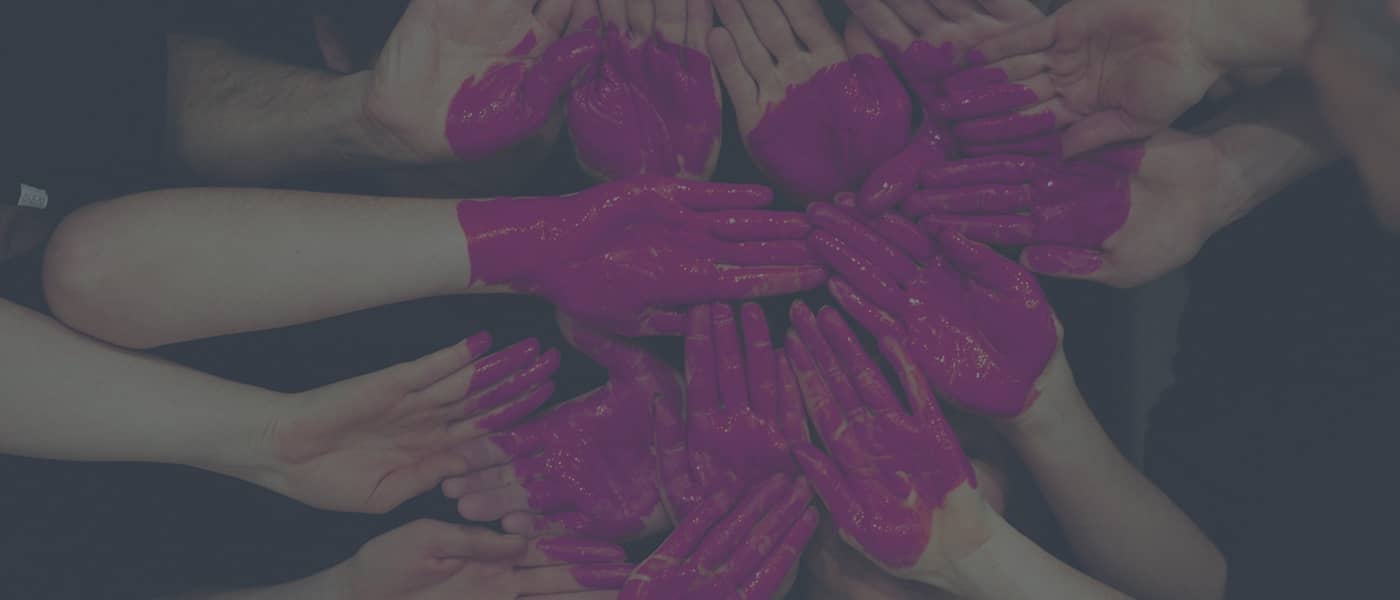Empower Beneficiaries, Then Get Out of Their Way

Stitches don’t last forever. They exist to help the body heal itself. With extra support, the living tissue rejoins and heals so that the stitches are no longer necessary.
Similarly, when a community is struggling with a social problem, be it hunger, poverty, or illness, the goal of social impact organizations should be to support this living thing and enable it to heal itself. Instead of stitches, humanitarian organizations bring resources and education to wounded communities.
But for a systemic or longstanding problem to be solved, intervening organizations must remember that lasting solutions come when the community is allowed to mend itself. And for this to happen, nonprofits must work with and empower the people they serve.
As Nathaniel Raymond, director of the Signal Program on Human Security and Technology at the Harvard Humanitarian Initiative, said in a talk at the Collaborative,
“Those who are affected themselves by disaster are innovating, are making decisions, are making demands. We are not the bosses; we work for those who are affected.
Beneficiaries of humanitarian aid have unique knowledge, credibility among local populations, and a lasting interest in their communities. Nonprofits must tap into their power to solve some of society’s most persistent and devastating problems.
They Know What You Don’t
When it comes to solving a social problem, knowledge and insight can be just as important as physical resources. And while organizations can learn much from observing and researching a community, there is simply no substitute for firsthand knowledge.
People within the communities you serve possess a valuable and complex understanding of the physical, mental, emotional, and cultural reasons their communities operate the way they do. They can help your organization see the barriers to change that have derailed solutions in the past.
Heifer International, for example, works to bring sustainable solutions to communities living in extreme poverty. The way they support people, however, depends on their needs. “We don’t come in and say to people, ‘Here is what you need to do.’ We form co-ops and we ask, ‘What do you need?’ They already understand what their needs are. We are there to support their needs,” said Cindy Jones-Nyland, former CMO at Heifer International.
When entering a new community or trying to introduce a new solution, social impact organizations should not begin by espousing their knowledge. Instead, they should ask questions and invite insights from the people who truly understand the challenges their community faces.
5 Ways Online Fundraising Pays for itself
They Bridge the Gap
Beneficiaries aren’t just important because they offer information to you, but also because they help bring information back to their communities. Whatever your message is, you cannot disregard the importance of the messenger. People are more likely to accept information and advice when it comes from someone they know and trust.
In order to mobilize people to adopt a new solution then, you must mobilize leaders and members of the community to endorse and share it among their neighbors. For example, when you are working in other countries and remote locations, language alone can be a huge barrier.
If you’ve ever studied another language, you know how much detail and nuance is lost when you aren’t a native or long-term speaker.
When introducing a new approach or system to a community (like a hygiene and sanitation program), the way you explain it can make a huge difference in the way the idea is received.
Before trying to bring a new initiative to a community, work with one or more of its members or ask them to be an ambassador for the program. You can overcome trust, communication, and cultural issues by involving community members in sharing your work.
They’re Here After You Leave
“Sustainable” is a huge buzzword in the social sector, and for good reason. We want to create lasting change that improves lives for generations, not just for a few months or years.
Continually sending outsiders to change or lead communities isn’t sustainable. A solution hasn’t truly been adopted by a community if it needs outsiders to continually implement it.
Organizations that intervene in communities must be careful not to create a system that only they can maintain. Even programs begun with the best of intentions can subjugate residents by forcing them to take on a supporting role in their own communities.
Let beneficiaries be the heroes of their stories. That doesn’t mean you shouldn’t offer help—quite the opposite. It’s the task of the social sector to provide resources and information to people lacking such opportunity. But it is also tasked with handing the reigns to the people who know the problem best. That’s why organizations must put community members in positions of power. Give people the tools to thrive and then get out of their way.
“We believe in the capacities of the local actors and we are trying to influence more and more of the humanitarian system to give more opportunities to local actors,” said Ali Al Jundi, the Syria project officer at Oxfam America. Nonprofits like Oxfam are increasingly working to support Syrian residents with their innovative responses to the devastating civil war.
Partnering with beneficiaries is the right choice for sustainability, scalability, and empowerment. But most importantly, it’s the right choice ethically. While the social sector must treat the symptoms of systemic problems like hunger and poverty, this intervention must be a stepping stone toward long-term solutions driven by local actors. Lasting change in communities is driven by the people living there.

The Nonprofit Growth Guide
Subscribe to the Classy Blog
Get the latest fundraising tips, trends, and ideas in your inbox.
Thank you for subscribing
You signed up for emails from Classy
Request a demo
Learn how top nonprofits use Classy to power their fundraising.



